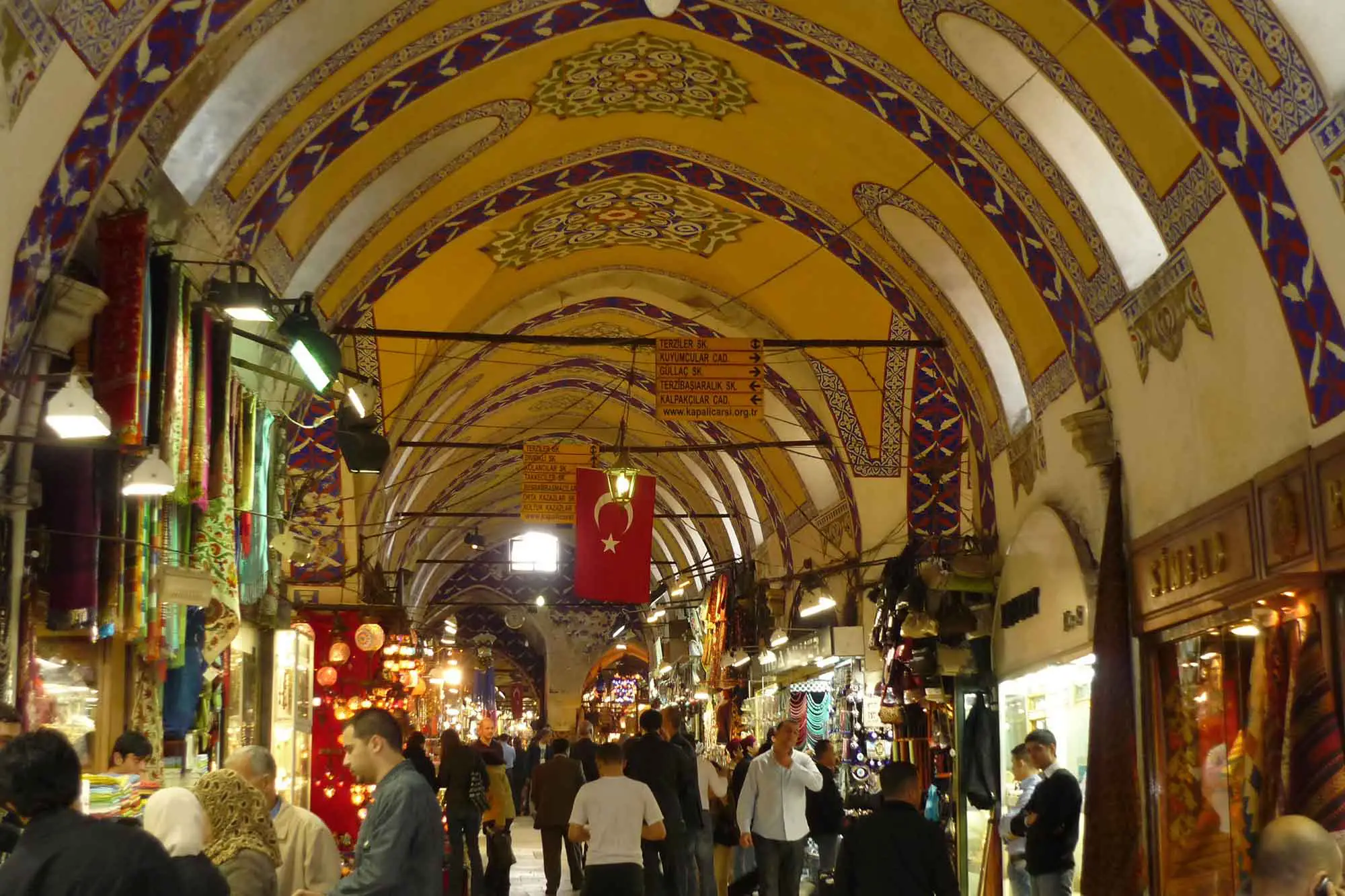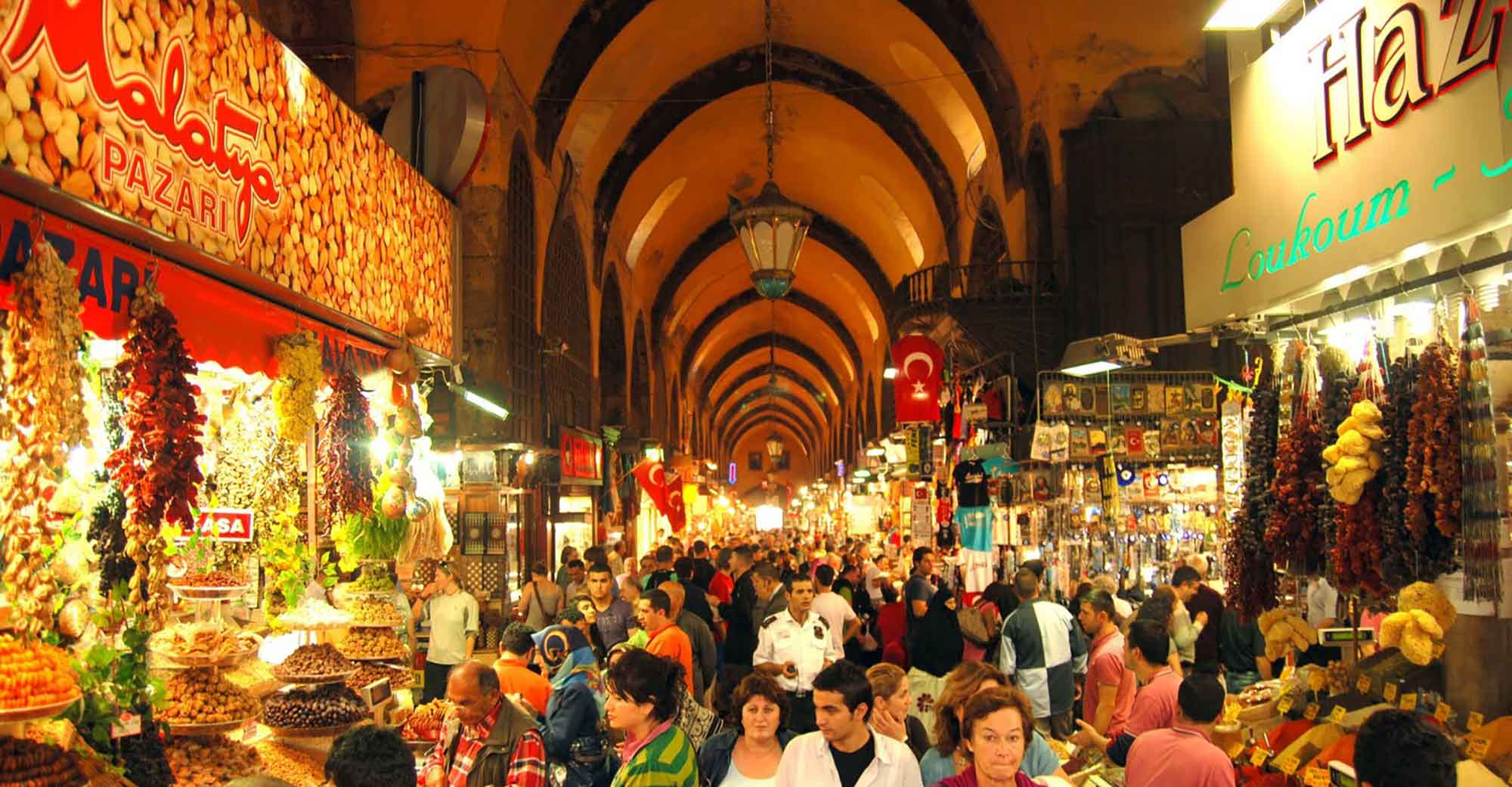Best Attractions in Istanbul
Istanbul, a city of unparalleled historical significance, is home to numerous monuments, each bearing witness to a rich tapestry of the past. Tracing its roots back to the founding of Constantinople 1700 years ago, Istanbul offers a visual and cultural feast, showcasing an extraordinary blend of Christian Roman, Byzantine, and Muslim Ottoman heritages. This unique melding of great civilizations creates a vibrant and diverse atmosphere, unlike any other city.
So, what stands out among Istanbul’s myriad of attractions? Below is a list of the 15 most visited sights in Istanbul, each a testament to the city’s diverse and storied history. For those keen to delve deeper into the wonders of Istanbul, we offer private tours guided by our team of expert, licensed professional guides. Contact us for more information and to embark on a journey through the heart of Istanbul’s rich cultural landscape.
Hagia Sophia
The immortal Basilica of Hagia Sophia, now called the Ayasofya Museum, is unquestionably one of the finest buildings of all time. Built as a testament of faith by Constance, the son of Constantine the Great, in the 4th century, the original building burned down sometime during the 5th century. A second structure built in its place by Theodosius II also burned in 532 and was finally reconstructed by Justinian between 532 and 537. Its immense dome soars 55 meters (180 feet) above the ground and its diameter spans 31 meters (102 feet). Panels of intricate Byzantine mosaics fill the space between the domes with images of early Christian saints.
Topkapi Palace & Harem
On a spit of land at the confluence of the Bosphorus and the Golden Horn stands the regal Topkapi Palace, the maze of buildings at the center of the Ottoman Empire between the 15th and 19th centuries. In these opulent surroundings, the sultans and their court lived and governed the second largest empire of all time. A magnificent wooded garden fills the outer, or first, courtyard. On the right of the second courtyard, shaded by cypress and plane trees, stand the palace kitchens, now galleries exhibiting the imperial collection of crystal, silver, and Chinese porcelain.
Blue Mosque
Facing Hagia Sophia stands the supremely elegant, six minareted imperial Blue Mosque or by its original name Sultan Ahmet Mosque. Built between 1609 and 1616 by the architect Mehmet, the building is more familiarly known as the Blue Mosque because of its interior gleams with a magnificent paneling of blue and white Iznik tiles. While even the view of Hagia Sophia is enough for us to fall in love with Istanbul, the Sultan Ahmet Mosque, which is right next to it, can carry our attachment to a completely different dimension. Due to the color of the magnificent patterns adorning its interior walls, this place is also known as the "Blue Mosque" among foreign tourists.
Underground Cistern
Near Hagia Sophia is the sixth-century Byzantine cistern known as the Underground Cistern or Sunken Palace. 336 massive Corinthian columns support the immense chamber's fine brick vaulting and stand in a depth of water that stretches for miles underground. Two Medusa heads, which are used as a pedestal under two columns in the northwest corner of the Cistern, are one of the masterpieces of Roman Art. The 4th century BC, which the visitors of the Cistern watched in amazement.
Chora Church
The 11th century Chora Church, called the Kariye Museum, remains in its 14th-century form and is after St. Sophia the most important Byzantine monument in Istanbul. Though unremarkable in its architecture, the interior walls are decorated with moving 14th-century frescoes and mosaics. Illustrating scenes from the life of Christ and the Virgin Mary, these brilliantly colored artworks convey the vigor of Byzantine art.
Hippodrome
Hippodrome of Constantinople, one of the masterpieces of Late Antiquity architecture, which witnessed countless events in its centuries-old history, was located in the square known as Horse Square in the Ottoman Period and Sultanahmet Square today. We know that the earliest version of the Hippodrome goes back to the Roman Emperor Septimius Severus (193-211 AD). Back then, the city's name was Byzantium, and that makes the Hippodrome the earliest surviving Roman structure of Istanbul.
Suleymaniye Mosque
The cascading domes and four slender minarets of the Suleymaniye Mosque dominate the skyline on the Golden Horn's west bank. Considered the most beautiful of all imperial mosques in Istanbul, it was built between 1550 and 1557 by Sinan, the renowned architect of the Ottoman golden age. On the crest of a hill, the building is conspicuous for its great size, emphasized by the four minarets that rise from each corner of the courtyard. Inside, the mihrab (prayer niche) and the mimbar (pulpit) are of finely carved white marble; shafts of light filter through the fine stained glass windows and fall on the stone floor below.
Dolmabahce Palace
Built in the mid-19th century by Sultan Abdulmecid I, the facade of Dolmabahçe Palace stretches for 600 meters on the European shores of the Bosphorus. The vast reception salon, with 56 columns and a huge crystal chandelier weighing four and a half tons and lit by 750 lights- a gift of Queen Victoria- never fails to astonish visitors. At one time, birds from all over the world were kept in the Bird Pavilion for the delight of the palace's privileged residents. Ataturk, the founder of the Turkish Republic, died in Dolmabahce on the tenth of November, 1938.
Archaeological Museum of Istanbul
Istanbul Archaeological Museum is one of the largest museums in the world, with over a million works of various cultures. The museum is Turkey's oldest museum building. It was established as an Imperial Museum by painter and archaeologist Osman Hamdi Bey in the late 19th century and opened to the public on June 13th, 1891. In the collection of the museum, artifacts belong to civilizations within the borders of the Ottoman Empire, from the Balkans to Africa, from Anatolia and Mesopotamia to the Arabian Peninsula and Afghanistan.
Grand Bazaar
The Grand Bazaar, built by Mehmet the Conqueror, is a historical shopping square surrounded by shops covered with roofs and domes. The core of the big area, whose name was “Carsi-yi Kebir” in history, consists of two bodies. The first bazaar built-in 1460 was named Cevahir, and the revenue of this bazaar was left to Mehmet II (Conqueror) to support Hagia Sophia. The Grand Bazaar, which attracts attention with a large crowd at all hours of the day, contains many different shops such as valuable jewelry, weapons, antiques, and food and beverage. The names in the bazaar are sufficient to express what they were before.
Beylerbeyi Palace
In the 19th century, Sultan Abdulaziz built the Beylerbeyi Palace, a fantasy in white marble amid magnolia-filled gardens, on the Asian shores of the Bosphorus. Used as the Sultan's summer residence and hunting lodge, it was offered to the most distinguished foreign dignitaries during their visits. The annexes of Beylerbeyi Palace, which hosted distinguished guests such as French Empress Eugénie, Austro-Hungarian Emperor Joseph, Prussian Crown Prince Frédéric Guillaume Nicola Charles, are remarkable. Beylerbeyi Palace continued to be an essential building during the Republican period, and guests from abroad stayed here.
Iron Church
Rising in the Fener district on the shore of the Golden Horn, the Iron Church draws attention like a pearl in the crown of the old and eternal city. The land is a donation by Prince Stefan Bogoridi, and they converted the wooden house into a church with the voluntary aid of the Bulgarians in Istanbul. The church sanctioned with a ritual in the Slavonic language on October 9th, 1849, and the metoh building, built two years later, became the cradle of the awakening of the cultural and religious consciousness of the Bulgarians. Today, the Iron Church St. Stephen remains one of the most significant symbols of the Bulgarian religious belief.
Spice Market
Spice Market is one of the most important historical and touristic trade centers of Istanbul. It has maintained its characteristic of being one of the important trade centers in every period with the effect of being a port city since its establishment, hosts thousands of visitors every day, especially domestic and foreign tourists. In 1597, Safiye Sultan, who was the wife of Sultan Murat III, order the construction of the New Mosque, which is now next to the Spice Market. The imperial mosques were not just worship centers but also community centers, including many buildings serving different purposes.
Galata Tower
The Galata Tower, a Genoese construction of 1348, rises 62 meters (204 feet) high above the Golden Horn. Its summit reveals a marvelous panorama of the Golden Horn, the Bosphorus and the silhouette of the city. Galata Tower is considered one of the oldest existing towers in the world. The tower was built in 528 by the Byzantine Emperor Anastasius as a Light Tower. The tower received severe damage during the Crusade IV in 1204, and in 1348 the Genoese repaired the tower in addition to the walls around Galata. They called it the Tower of Jesus. It was also the tallest building in the city in those years.
Istiklal Street
Istiklal Street or Istiklal Avenue is one of the most visited streets in Istanbul. This street is located in Beyoglu, one of the oldest districts. One end is in Tunnel in Galata and one end is in Taksim Square. The middle of the street is the region where Galatasaray High School is located. Istiklal Avenue, which has survived to the present day; has become an important center in terms of eating, drinking, and shopping. It continues to host millions of domestic and foreign tourists every year.














